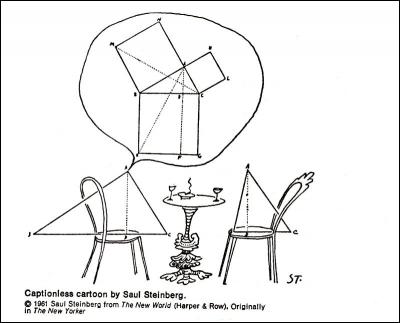« San Antonio, Texas |Main | Value study »
The Evolution of Communication
November 3, 2009
 The title of a work of art can help sell it, and captions can complete our understanding of a picture, but the most successful works of Art manage well without an explanation. Our visual senses – sight and insight – have a language of their own. Upon viewing anything, multitudes of information are presented and understood simultaneously, almost instantly. With or without color, images are powerful, possibly even more than words, because with the development of human communication, pictures came first. It’s now widely accepted that symbols marked the origins of written language across the world.
The title of a work of art can help sell it, and captions can complete our understanding of a picture, but the most successful works of Art manage well without an explanation. Our visual senses – sight and insight – have a language of their own. Upon viewing anything, multitudes of information are presented and understood simultaneously, almost instantly. With or without color, images are powerful, possibly even more than words, because with the development of human communication, pictures came first. It’s now widely accepted that symbols marked the origins of written language across the world.
It takes much less time to perceive than it does to write about it. For a hands-on illustration of this, draw a simple Smiley Face, and note the time that it takes to draw it. Afterward write down everything that comes to mind about that icon; what it means, other general impressions and associations. Although this is a familiar icon with clear connotations, possibly something we see every day now, plus almost all of us have drawn it at some point, within seconds of describing it you will realize how much longer it takes to interpret as quickly into words. Harvey Ball, the original artist of the Smiley Face icon must be flabbergasted that succeeding generations would come to coin the term, “emoticons”, based on an indefinite number of facial expressions that spawned from the first, including animated ones that wink and cry, and more.
Essentially, full comprehension in any language relies on those aspects of our mind’s eye: memories and imagination in order to be fully effective. Pictures appeal to our abstract, multidimensional experiences and through the emotions, allowing for individual’s interpretations. There are higher expectations for words. We assume that they alone are qualified when we’re talking on the phone and participating in online computer groups, for instance, but it actually takes extra effort for our intent to be clear when we don’t have access to the visual side of our statements. Even if we speak the same language, the words we choose and their meaning can be misinterpreted and misunderstood.
Relying on the visual aspects of learning, subjects in school are traditionally taught using chalkboards and eraser-boards, stimulating audio and visual senses. Likewise, motivational speakers often use diagrams to help get the point across. The use of imagery is rampant everywhere now. It’s extremely effective in all forms of advertising, and despite all attempts to hold on to all copyrights, if the art is relatable it spreads like wildfire on the internet. Artists of every kind are more vulnerable than ever to fraud.
Harvey Ball’s Smiley Face is a perfect example of how artists are not really in control of what they create. Generally though, any exposure is good exposure, because most people who borrow other people’s graphics or ideas still want to know who the source is. As artists it’s beneficial and constructive for us to continue moving on to the next best project and keep progressing with a lifetime of work. We have to learn to let go of the strong bond we have with the art we create. It’s personal, to be sure, but a good motto is, “There’s more where that came from”.
Along with the resources available to us now, in our progressive age of high technology and wireless everything, it’s still the Human factor that needs refining. We only need to trust intuition as much as logic, with as much emphasis on communicating our emotions as openly and explicitly as we do words and speech. Fortunately there are infinite forms of expression, and inevitably it’s a good thing that creativity is available to everyone, not just artists. Creativity thrives on challenges to communicate effectively; it always has and it always will.
More about Artists and history in the article, The Influence of History.
~
Credits: Above cartoon by Saul Steinberg (1914 – 1999) was a Romanian-born American cartoonist, best known for his work in the New Yorker magazine. Harvey Ball, Wikipedia, Smiley Face
Categories: cartoon, history/multicultural theme, inspiration, Other Artists, Smile | 2 Comments »
2 Responses to “The Evolution of Communication”
Comments
You must be logged in to post a comment.


November 4th, 2009 at 11:06
Did you write this? very astute- you should send it to Robert Genn.
November 4th, 2009 at 11:06
Hi Virginia. Yes, I wrote it and thanks, I may do that! The incentive to edit some of the articles in the ‘drafts’ folder is a new website called L7 Art Mall that publishes artists’ articles in exchange for listing artwork in the online gallery. It’s a win-win situation when like-minded businesses collaborate this way. The link is on the right if anyone is interested to send their own articles in, get more exposure, and help Carrie make L7 a success.